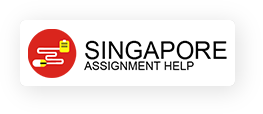| University | Ngee Ann Polytechnic |
| Subject | Critical AppraisalNursing Research Methods or Research in Health Sciences |
Critical Appraisal Essay Instructions (25%)
Official (Closed) – Non Sensitive
Oct 2024 Semester – Ngee Ann Polytechnic
Contents
- 1. Objective of assignment
- 2. Weightage of assignment
- 3. Re-test component
- 4. Deadline
- 5. Instructions
- 6. Plagiarism notice
- 7. Submission checklist
- 8. Late submission penalty
- 9. Resources
Hire a Professional Essay & Assignment Writer for completing your Academic Assessments
Native Singapore Writers Team
- 100% Plagiarism-Free Essay
- Highest Satisfaction Rate
- Free Revision
- On-Time Delivery
1. Objective of Assignment
This individual assignment evaluates students’ ability to read, understand, and critically analyze ONE primary, quantitative research article. A critical appraisal is the processing of examining and determining the worth or value of research evidence for decision-making.
2. Deadline
Week 14: Wed 15 Jan 2025 (10 AM)
DRAFT SUBMISSION FOLDER FOR INR ONLY Opens Week 8 16 Dec 2024, and Closes Week 13, Sun 12 Jan 2025, 10 AM. For early submissions who wish to check their assignments for text similarity. Draft submissions will not be stored in the repository.
FORMAL SUBMISSION FOLDER Opens Week 14 Wed 15 Jan 2025, 10 AM. The most recent submission will be stored in the repository for grading. Students who miss the Draft Submission Period can submit their drafts to this folder for unlimited times. Turnitin may have slight delays for 4th submissions onwards.
3. Weightage of Assignment
This assignment is worth a total of 100 marks or 25% of the final grade for the module.
4. Re-test Component
No. Students who fail the assignment will not be allowed a second chance to repeat the assignment.
5. Instructions
- Part A: From the 2 articles you did for Summary Table Assignment 1, critically appraise ONE primary, quantitative research article using the critique template and marking rubric as a guide. Do not choose systematic reviews, meta-analysis, or qualitative research. The chosen article should be within 5-10 years (2013-2023) and have a fairly detailed Methods section.
- Part B: Your assignment must be written in an essay form formatted as follows:
- Word document
- Double-line spacing
- Font size 12, in Times New Roman, Arial, or Calibri font only.
- Word count range 900 to 1100 words. Marks will be deducted for word count outside the limit.
- Pages must be paginated (Word -> Toolbar -> Insert Page Number)
- At least 3 scholarly references in APA 7th ed style.
6. Plagiarism Notice (Turnitin)
This assignment will be checked for text similarity using Turnitin. Students are advised to finish their drafts early to review the Turnitin similarity report and polish their drafts.
TIP: Always paraphrase and cite at the same time to avoid plagiarism.
Severe consequences of plagiarism: Students found guilty of plagiarism will receive a zero mark for the assignment and/or have the module grade nullified. Turnitin similarity scores will be available for the first three submissions. After the third submission, similarity results will only be available after 24 hours.
7. Submission Checklist
Prepare TWO items for submission:
- The critique assignment including reference list (PDF or Word file formats only)
- Annotated PDF copy of the article (PDF format only)
8. Late Submission Penalty
For each calendar day up to 7 days past the deadline, 10% of the maximum possible marks will be deducted. After 7 days, the assignment will be awarded ZERO marks.
Late penalty calculation: Days late are rounded up to the next whole number. For example, if a student submits 1.3 days late, it will be treated as 2 days late.
9. Resources
- Coughlan, M., Cronin, P., & Ryan, F. (2007). Step-by-step guide to critiquing research. British Journal of Nursing (Mark Allen Publishing), 16(11), 658–663. https://doi.org/10.12968/bjon.2007.16.11.23681
- Dewan, P., & Gupta, P. (2016). Writing the Title, Abstract and Introduction: Looks Matter!. Indian Pediatrics, 53(3), 235–241. https://doi.org/10.1007/s13312-016-0827-y
- Dr Nasir (2020, Apr). Research Process & Structure – Part 2. [Video] YouTube. https://www.youtube.com/watch?v=zUICZlkp03Y&t=361s
- Ingham-Broomfield, R. (2008). A nurses’ guide to the critical reading of research. Australian Journal of Advanced Nursing, 26(1), 102–109.
- LSE Learning Technology and Innovation. (2016, June 27). How to interpret the Turnitin originality report—Guidance for students. https://www.youtube.com/watch?v=6bjnVRVIdJA
- Purdue Writing Lab. Changes in the 7th Edition. https://owl.purdue.edu/owl/research_and_citation/apa_style/apa_formatting_and_style_guide/apa_changes_7th_edition.html
- Seager, T. P. (2019, September 17). Critique vs. Criticism. StoryGarden. https://medium.com/storygarden/critique-vs-criticism-36ddf0d191ff
- Tullu M. S. (2019). Writing the title and abstract for a research paper: Being concise, precise, and meticulous is the key. Saudi Journal of Anaesthesia, 13(Suppl 1), S12–S17. https://doi.org/10.4103/sja.SJA_685_18
Buy Custom Answer of This Assessment & Raise Your Grades
Looking for Plagiarism free Answers for your college/ university Assignments.
- DTVKX4-07B Designing Physical Environment Assignment 1 – Report
- 7WBS2010 Enhancing Operational Efficiency at the Students’ Union Shop through Data Analytics
- Financial Statement Analysis Report – Assessment 2
- COM273e Innovative Marketing Strategy for Sustainable Activewear in Asia – ECA
- NCO201 Self-Directed Learning Plan & Reflection for Personal Growth
- The impact of AEDs on OHCA Patients and Their Survival Outcomes in Singapore – Report
- MKT362 ECA – FoodPanda Case Study & Legal Compliance in Singapore
- CB0494 Predicting Lung Disease Recovery Using Data Science
- MH4522 Kernel Estimation for Poisson Point Processes – Spatial Data Science Assignment
- ANL203 Business Analytics for Student Monitoring

